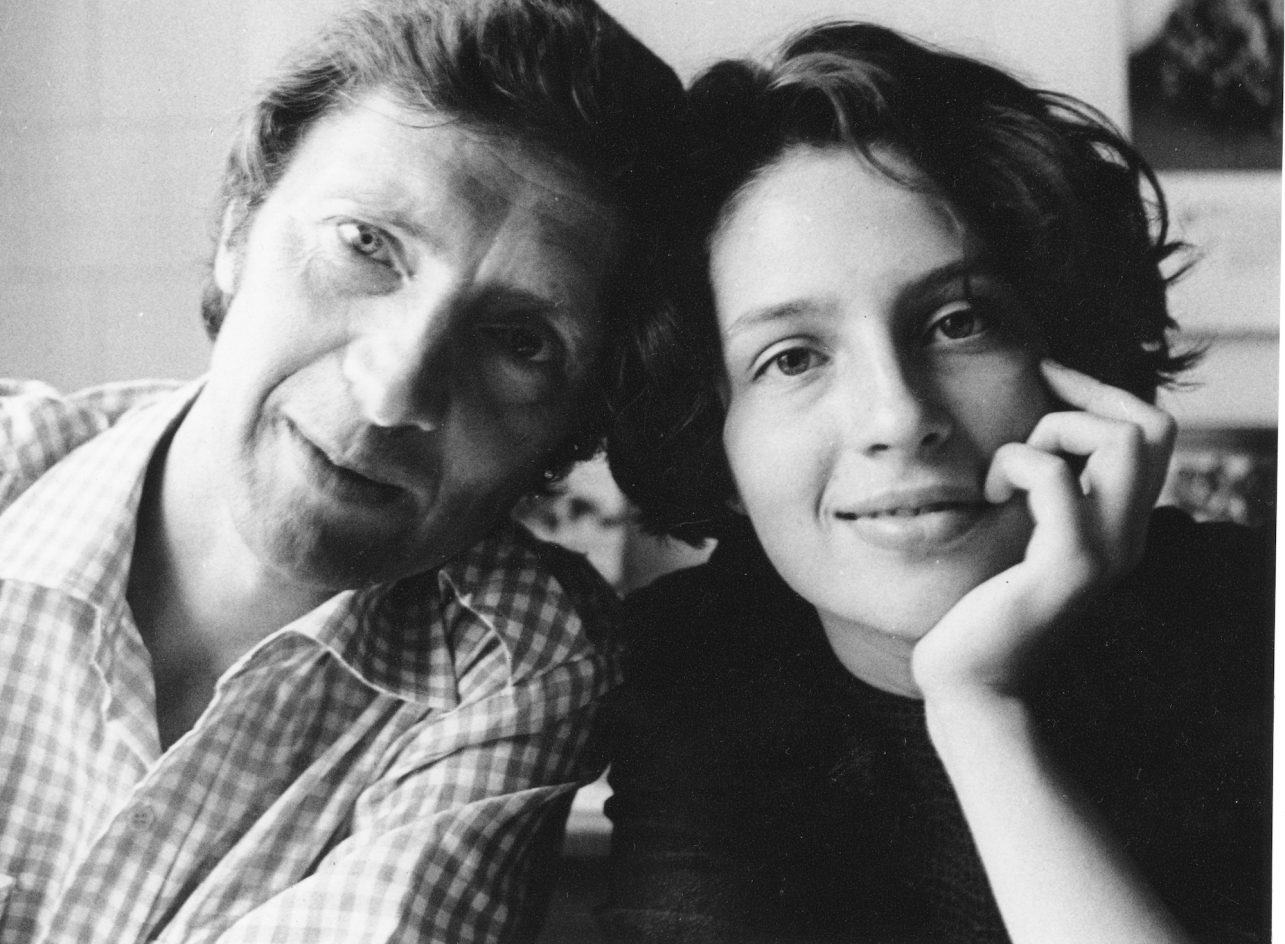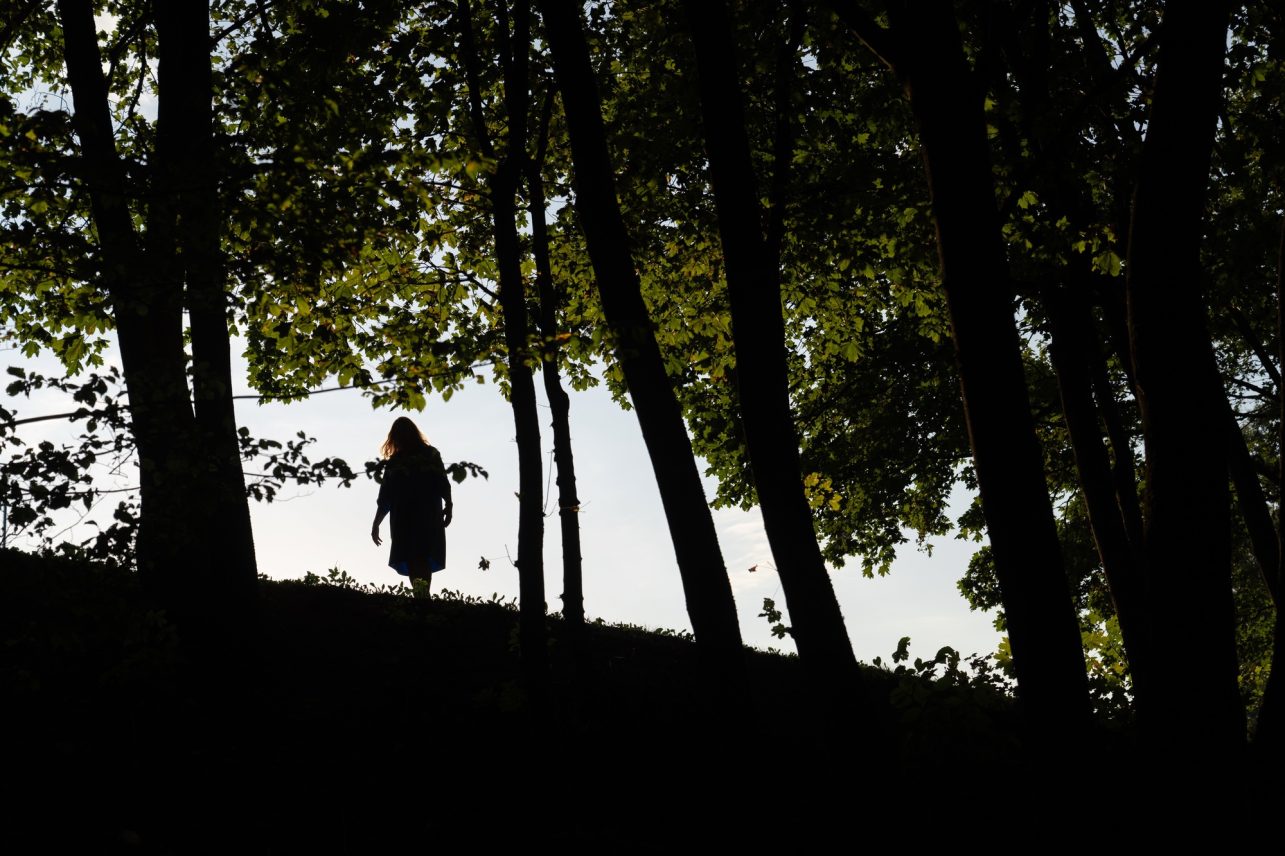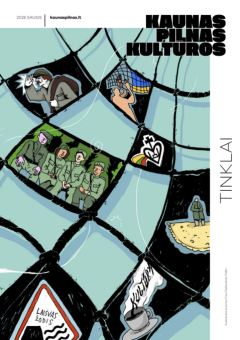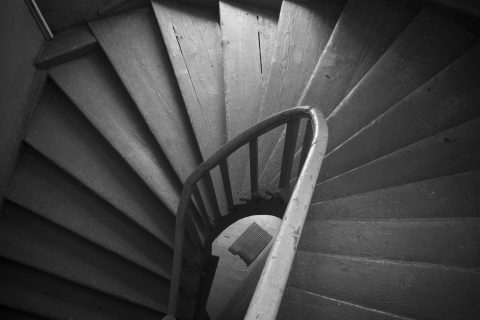I spoke with Eglė Rakauskaitė over the phone, our voices suspended in the waves between Kaunas and Panevėžys. In the background of the latter city, the noise of various modes of transportation could occasionally be heard: scooters buzzing, ambulance sirens echoing, and car engines clattering, adding an urban rhythm to our conversation. At exactly 6 pm, the church bells rang, and the interlocutor remarked that this must have been a good omen: we were just talking about her determination to open a new photography centre in Svirnai II within three years.
Eglė Rakauskaitė is one of Lithuania’s most renowned contemporary artists, a recipient of the National Culture and Art Prize, and the author of numerous exhibitions and works. She is now also the inheritor and organizer of her father, photographer Romualdas Rakauskas’ archive. The artist has already made significant strides in this direction: she founded the public institution aRRchyvas, acquired two buildings in Svirnai II and Troškūnai for artistic activities, organized an exhibition, established the R. Rakauskas Award for photographers, and this is just the beginning of creating a new photography centre.

First, I want to talk about your memories. In 2006, you made the film Father, where the main character is your dad. In it, you mention that you only remember your childhood through your father’s photographs. I’m curious, what kind of childhood, and at the same time, what version of yourself do you see when looking at them?
My childhood photographs are full of nature and wildlife: a hedgehog, geese, a goat, and my grandmother’s cow, who didn’t mind my kneading and climbing. The photographs also show Samogitia, the village where my grandmother, my father’s mother, lived. The place and the buildings are no longer there, the roads are overgrown with grass, and I have no idea how to find it or whether it is worth looking for. I view my father’s photos as works of art. I don’t see myself in them, and the places where they were taken are not very familiar to me. They are more photographic visions.
Did you find any works that surprised you among the ones your father left you?
I certainly did. There are countless unseen and unexpected ones, and I’m in the process of discovering, strategizing, preparing, and sorting the negatives for digitization. However, the revision of the archive is closely related to space. You need a spacious place to arrange the archive, to sort it, and put it into categories. Daylight affects the negatives, and the more often they are exposed, the more different the prints they produce, so viewing the archive is also destroying it. I am looking for special storage space, and at the same time, I am negotiating with the National Museum of Art about the oversight of the archive and cooperation.
All the activities related to the photographer’s archive have been absorbed into your recently founded public institution aRRchyvas. What is the long-term vision and immediate goals of aRRchyvas?
The long-term vision is museum, educational and publishing activities, and the immediate goals are to generate funds for the creation of a museum.
For this purpose, you have acquired an abandoned Soviet-era kindergarten in the small town of Svirnai II in the Anykščiai district, which you plan to turn into a photography center. Tell us about this place and the building on Vilties Street. Why did you choose this building?
The granary was usually the only windowless homestead building where grain and wool were stored. My father and I kept valuable things in the granary. The town’s name itself is also important, as it connotes the preservation of precious and valuable objects. Vilties (Hope) Street was also a key symbol. Vilties Street ranks 31st among the most common street names in Lithuania. There is only one street of Gerosios vilties (Good Hope), and there is no street of Vilties Šviesos (Light of Hope) at all (referring to R. Rakauskas’ graduation work titled The Light of Hope, ed.).

On August 18, in the former kindergarten building in Svirnai, you organized a one-day exhibition featuring works by Rakauskas and his contemporaries.
I organized it on the eve of World Photography Day and Rakauskas’ birthday. Local residents attended the exhibition, but I was also thrilled by the arrival of a bus filled with cultural figures traveling from the Nordic Summer (an annual literary discussion forum, ed.). Seeing the cultural elite in this place was a significant and emotionally valuable achievement. It was important that they felt the atmosphere of the place and confirmed that it’s a spot where one wants to take their time, and not be in a rush. It was difficult to recover from this event, as I was filled not only with joy but also with amazement.
Was the Antanas Sutkus Gallery in Zapyškis a kind of inspiration for the open gallery in Svirnai?
It was an encouragement, proof that you don’t need luxurious million-euro spaces, refined style, and architectural solutions because when thinking about what awaits me in Svirnai in terms of form, I wondered if I would have the strength to take care of the content. Then I realized that the content has to be taken care of first and then it should generate energy. The support from the environment is also important.
The one-day exhibition was a kick-off event in Svirnai. Didn’t you want to extend the exhibition?
Perhaps I could have continued spending more money. Before the event, I decorated the building with the inscription ARRCHYVAS and one could say it was money down the drain because the building is going to be insulated, but the photogenic nature and the impression were rewarding. The building still has no windows and doors and is in need of major repairs. I was worried about the weather conditions: photographs quickly curl up from moisture and drafts, so I was reluctant to leave them in the building. The effort put into preparing for the one-day exhibition – working with the Šiauliai Aušros Museum, Vytautas the Great War Museum, borrowing works from the classics, preparing contracts, fulfilling agreements, selecting photographs, and obtaining museum prints – will not remain the content of just one day. I have permission to use the photographs again and plan to do so in Troškūnai.


Let’s talk about them. You recently became the owner of a former store building in Troškūnai. Will it also be connected to aRRchyvas activities?
Only temporarily, while the architectural project for the Svirnai kindergarten is being prepared, along with the construction budget, and while the building is being brought back to life. A few weeks ago, water and sewage were installed in the Troškūnai building, and unlike the one in Svirnai, it doesn’t require major renovations. Personally, I want a separate space to work in, and here I plan to establish my own creative studio and organize exhibitions.
In the town, there are monastery facilities where people can be accommodated, so residency plans are also on my mind. However, there isn’t a single place to get coffee or a meal in the town, and I’d like to fill that gap. I imagine a new cultural route could emerge in Aukštaitija: starting in Panevėžys at the Stasys Museum, then heading to Troškūnai on the way to Anykščiai, and from there stopping by Svirnai. So, these choices are rational, and cultural tourism strategy is important to me.
When speaking with curators of residencies in Lithuania’s regions, such as those in Kintai or Aleknaičiai, I often hear a common issue: it’s hard to draw people out of the big cities, and reaching remote locations by public transport is challenging.
I’ve been thinking about this. I tested the location with literary figures during the previously mentioned one-day exhibition. Still, I believe it’s a perfect place for creators, with beautiful hills in the distance, and many people are cycling in this area. It’s also close to major cities. It was important to me that the residency would be easily accessible and not necessarily for long stays, perhaps just for weekends during the summer.
That’s a good point about public transportation. When looking for a place for aRRchyvas, it was essential to me that there was a bus stop nearby. In Svirnai, it is only ten minutes away from the building, and that way, essentially leads through an open-air museum of architecture. Svirnai was a leading collective farm during the Soviet era, after all, such a large kindergarten was built – 460 square meters – and the settlement was supposed to expand even further.

You mentioned that you’re currently managing the archive on your own. Do you plan to expand your team?
That’s a good and difficult question. I’ve noticed that life often throws opportunities my way, so I’m open to possibilities but not forcing anything. At this stage in my life, I mostly want results, and the sooner, the better. I aim to complete the Svirnai project within three years, before my sixtieth birthday. Just now, the church bell started ringing – perhaps a sign that angels are supporting me [laughs]. It feels like this is the right time when things can move forward, and energy won’t be wasted.
I’d love to hear what else you’re currently involved in aside from the aRRchyvas activities.
Right now, it’s a calmer period. A week in Paris is coming up, and it will be interesting to witness the opening of the entire Lithuanian cultural season. The Pompidou Centre will host an exhibition of newly acquired works by Lithuanian artists from the 1960s to the present. It includes works by Kazys Varnelis and Pakui Hardware (we spoke before September 13, when the exhibition Lithuanian Contemporary Art from the 1960s to Today: A Major Donation, prepared in collaboration with the MO Museum, opened at the Pompidou Centre, ed).
The exhibition also presents your video film, included in the Pompidou Collection, Be kaltės kaltiems. Pinklės. Išvarymas iš rojaus (1996). What is your relationship today with the works you created almost two decades ago?
It has cooled down. Pompidou also wanted Meduje (1996) and Taukai (1998) for the collection. These works are my legendary start, when, it seems, there was nothing, we saw nothing, and yet, somehow managed to create masterpieces. I wanted better quality work to be shown at the Pompidou. Back then, we filmed the performance on a VHS tape. In 2023 we filmed it again in 4K resolution that can be played on the biggest screen; a special soundtrack was also created. In the version of 2023, the girls are no longer joined by braids and are no longer placed in even rows. They are joined by artificial flowers, and a central figure emerges, around which two wheels revolve, moving like water ripples. It also shows my changed attitude to life, the idea that one person, charisma, and intention can inspire change.
I find it fascinating that by comparing the two works, we can also see the shift in the artist;s perspective.
Absolutely. In 1999, I participated in the Venice Biennial together with Mindaugas Navakas. Navakas brought slate, and I presented two small video works: Veidai and Meduje. At that time, we were filming with VHS and didn’t have the means to synchronize the two works. The projections were very small, and a lot was missing to make the presentation memorable. We needed to present material about the works of each country to the Venice catalog very early. We added it and submitted but at the very end, we decided to take other artworks, so the catalog didn’t match the actual exhibition. It was an important first time for Lithuania, and I feel as if I did not participate; I am not part of the history of the Venice Biennial. I would like to participate there again, to present a good quality performance.




